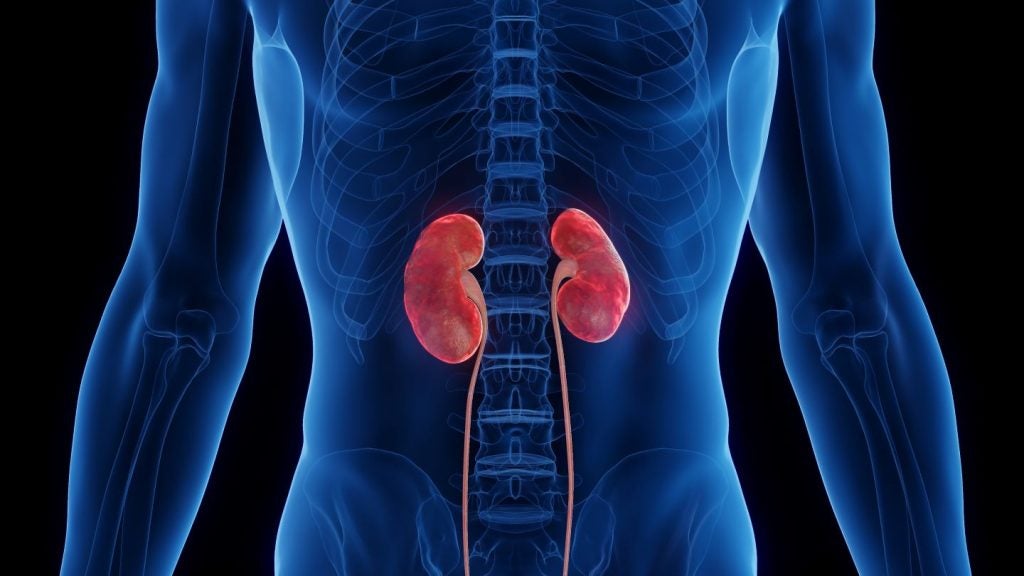This week on Pipeline Moves, we start off by looking at the terminations of a Phase II focal segmental glomerulosclerosis trial and a Phase I/II oncology trial. We also investigate a suspension of a Phase III trial in spinocerebellar ataxia. We finish the week by reviewing trial completions in presbyopia, adiposis dolorosa, and oncology indications.
Interested in seeing these updates in your inbox? Sign-up for our Pipeline Moves newsletter. You can read the last edition here.
Pfizer terminates Phase II glomerulosclerosis trial
Pfizer’s PF-06730512 saw its Phase Transition Success Rate (PTSR) drop in focal segmental glomerulosclerosis (FSGS) after a Phase II trial was terminated. The PTSR fell by 16 points to 14%. PTSR is the probability, given as a percentage, of a drug progressing successfully from one development stage to the next.
The ClinicalTrials.gov listing was updated from active, not recruiting to terminated on 10 April with GlobalData evaluating the asset the following day. The trial was terminated due to lack of efficacy and not due to safety concerns.
The purpose of the Phase II adaptive, open-label trial (NCT03448692) was to evaluate the efficacy, safety, tolerability, and pharmacokinetics of PF-06730512. The trial enrolled 47 patients with FSGS.
See Also:
PF-06730512 acts as a SLIT2 antagonist. The neutralizing antibody is under development for the treatment of FSGS.
How well do you really know your competitors?
Access the most comprehensive Company Profiles on the market, powered by GlobalData. Save hours of research. Gain competitive edge.

Thank you!
Your download email will arrive shortly
Not ready to buy yet? Download a free sample
We are confident about the unique quality of our Company Profiles. However, we want you to make the most beneficial decision for your business, so we offer a free sample that you can download by submitting the below form
By GlobalDataPhase I/II oncology trial terminated
Shanghai Haihe Biopharma’s HH-2710 saw its PTSR plummet in three oncology indications after a Phase I/II trial was terminated. The PTSR fell by 20 points to 9% in melanoma, 15 points to 5% in solid tumours, and 16 points to 5% in Erdheim-Chester disease (ECD), a rare blood cancer.
The ClinicalTrials.gov listing was updated from active, not recruiting to terminated on 12 April, with GlobalData evaluating the asset the following day. The trial was terminated by the sponsor as a business decision.
The purpose of the first-in-human, open-label study (NCT04198818) was to evaluate the safety, tolerability, and pharmacokinetics of HH-2710 in patients with solid tumours. The trial only enrolled 37 of the 138 patients originally anticipated to participate. HH-2710 acts as ERK1 and ERK2 inhibitors.
Seelos suspends Phase III ataxia trial in China
Seelos Therapeutics’s trehalose saw a 12-point fall in its Likelihood of Approval (LoA) settling at 16% in spinocerebellar ataxia (SCA), following the suspension of a Phase III clinical trial in China.
The trial status on Chinadrugtrials.org was changed to active suspension, and GlobalData updated the drug’s LoA on 17 April. LoA is identified via GlobalData’s analysis using a combination of machine learning and a proprietary algorithm. LoA can be calculated for a drug by considering characteristics like therapy area, indication and molecule type.
The randomised, double-blind, placebo-controlled trial (CTR20230230) investigated the safety and efficacy of trehalose injection for the treatment of adults with SCA. The primary endpoint of the study was the change from baseline to week 52 on the SARA scale. SARA is a clinical scale that assesses a range of impairments in cerebellar ataxia.
Trehalose is a low molecular weight disaccharide sold under the brand name Cabaletta. SCA is caused by degeneration of the cerebellum. Trehalose works by crossing the blood brain barrier to activate transcription factor EB. This stabilises proteins and activates autophagy, preventing further degeneration.
Phase III trial completion in presbyopia
Visus Therapeutics’s Brimochol saw its LoA rise after a Phase III trial in presbyopia was completed. The drug’s LoA increased by eight points to 21%.
The trial status was updated from recruiting to completed on ClinicalTrials.gov on 20 April, and GlobalData evaluated the asset on the following day.
The multi-centre, double-masked, randomised study (NCT05270863) evaluated the efficacy and safety of Brimochol and Carbachol in patients with emmetropic phakic and pseudophakic presbyopia. The trial enrolled 182 patients. The primary endpoint measured the change from baseline in near visual acuity (VA).
Brimochol, a formulation of brimonidine in combination with carbachol (VTI-001), is under development for the treatment of presbyopia. Brimonidine acts as a selective alpha 2 adrenergic agonist and carbachol is a potent agent that stimulates muscarinic as well as nicotinic receptors.
Completion of Phase IIa non-malignant disorder trial
Caliway Biopharmaceuticals’s CBL-514 saw its PTSR increase in adiposis dolorosa after a Phase IIa trial was completed. The drug’s PTSR increased by 10 points to 19% in adiposis dolorosa, also known as Dercum’s Disease or Anders Disease.
The trial status was updated from active, not recruiting to completed on ClinicalTrials.gov on 20 April, and GlobalData evaluated the asset on the next day.
The open-label, randomised study (NCT05387733) evaluated the safety and efficacy of CBL-514 injections in patients suffering from Dercum’s disease lipomas. The study recruited 12 adult participants with confirmed Dercum’s disease and at least four painful lipomas of an appropriate size.
The study’s primary endpoint measured the efficacy of CBL-514 within a timeframe of up to 84 days post-injection. The asset’s efficacy was evaluated by comparing the change in lipoma or nodule dimensions measured by ultrasound.
CBL-514 is under development to reduce local subcutaneous fat, oedematous fibrosclerotic panniculopathy cellulite, Dercum’s disease and benign tumours such as lipomas. The drug candidate is administered through subcutaneous or parenteral routes.
Oncology vaccine completes Phase I trial
SQZ Biotechnologies’s SQZ-PBMC-HPV saw its PTSR rise in anal cancer and vaginal cancer after a Phase I trial in adult solid tumours was completed. The PTSR increased by seven points in both indications reaching 47% in vaginal cancer and 38% in anal cancer.
The trial status was updated from active, not recruiting to completed on ClinicalTrials.gov on 14 April, and GlobalData evaluated the asset on 17 April.
The open-label study (NCT04084951) evaluated the safety and tolerability, immunogenic effects, antitumor activity, and pharmacodynamics of SQZ-PBMC-HPV as a monotherapy or in combination with checkpoint inhibitors like Roche’s Tecentriq (atezolizumab), Bristol Myers Squibb’s Opdivo (nivolumab) and Yervoy (ipilimumab) or an Opdivo/Yervoy combination, in patients with solid tumours.
The study initially anticipated to recruit 200 adult participants with histologically confirmed incurable recurrent, locally advanced or metastatic human papillomavirus strain 16 positive (HPV16+) solid tumours. However, the trial ended up enrolling only 30 subjects.
SQZ-PBMC-HPV is under development for the treatment of solid tumours and human papillomavirus (HPV)-associated cancers including cervical, rectal, vulval, vaginal and penile cancers, and head and neck cancers. The drug candidate is a therapeutic vaccine consisting of engineered B cells, which carry tumour-associated proteins or antigens.
Need to know:
GlobalData’s proprietary model uses a combination of machine learning and an algorithm to calculate an individual drug’s PTSR and LoA. While LoA provides the probability of a drug ultimately receiving market authorization, PTSR indicates the probability of a drug’s advancement to the next stage of clinical development. The model uses datapoints from individual drugs, clinical trials, regulatory milestones, company, and financial databases.






